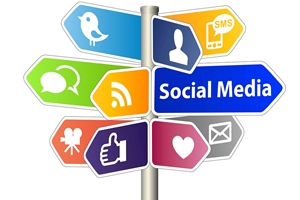Gabby Schwartz
The new social media era has marked an evil precedent for men and women. Widespread apps like Instagram, Snapchat, and Tinder are places where boys and girls have the opportunity to showcase their image. The desire to show off one’s exterior image typically commences in middle school. With that, 77% of teens aged 12-17 have cell phones, and 23% have smartphones according to Lenhart from the Pew Research Center. The fusion of puberty and mobile internet access can lead to a more sexualized search base. Almost every celebrity has an Instagram, and at Radnor High School alone, each of the 30 students I asked, also has one. This popularization and expanded search base makes it easy for one to find a profile that fits his or her desire.
Instagram is a place where people can post pictures of activities or achievements, but lately it has become more of a popularity contest. Popularity and beauty are now quantitatively defined. The more likes a picture gets, the more liked or attractive the person is. “Likes–validation is only a tap away” says Sales, a social media researcher. Producing sexy pictures is a quick and an assured way of increasing one’s number of likes. For girls, this appetite for attraction may lead them to create an online profile different from who they are in person. The girl may post a scandalous picture in order to receive likes from teenage boys. What does this have to say about girls using social media? One common assumption is that females must have a high level of insecurity or self-consciousness that the quantitative representation helps assure them that they are good looking. Yet, when a picture is liked, it is done so because of the image it portrays; the image cannot provide the details of one’s personality or attitude. This liking system is a way to amplify the significance in appearance and downplay the influence of internal attributes.
Tinder is a dating site utilized mainly by college students and young adults. Boys and girls can view a pool of different people by looking at a profile picture and a short synopsis about the person. However, both boys and girls tend to focus primarily on the photo, rather than on the personal information. The participants can choose whether to swipe right (interested) or swipe left (not interested). Evolutionary psychology states that “in many cases, appearance is the most important determinant of whether or not we initially like a person” (Margalit). Since the pool of Tinder users is so diverse, how do guys and girls make their profile the most attractive, unique and outstanding? It’s quite common to see girls posting a lascivious photo, exaggerating makeup, or having phony information to appeal to the desired audience. With guys, it’s commonplace to post a picture showing off their muscles or doing a manly activity, like riding a motorcycle. “I don’t even use Tinder for dating,” says Olivia McKay from James Madison University. “I’ll look for hot guys at the school and swipe right just for fun.” When I asked Olivia about the authenticity of each profile, she was quick to answer. “I don’t think I’ve seen an honest profile…mine isn’t…everybody knows that Tinder is really just a game of hot or not.” Olivia’s response wasn’t exactly surprising. Although it did spark the complex question of why? “It’s a confidence booster…it’s nice to know when guys think I’m good looking,” Olivia replied.
The outbreak of smartphone usage has generated a new way of “putting yourself out there”. Instead of being bold and upfront about who “you” are as a person, it’s easier to hide behind a phone and post contrived photos and information to seem more attractive. It seems so simple and controllable, but some of the unfortunate outcomes are not. Cyber bullying, depression, and an overall decline in mental health are just a few possible consequences of to social media. It’s nice and reassuring to hear the positive aspects about your appearance, but when you’re on the other side, not getting many likes or finding that nobody “swipes right” on you may have a totally different effect. The future of millennials seems only as bright as the screen of the iPhone.
Categories:
The Many Faces of Social Media
April 6, 2016

More to Discover





